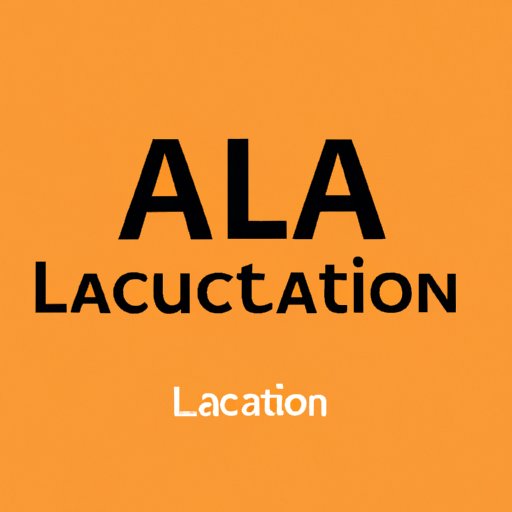I. Introduction
Whether you’re traveling the world, studying geography, or navigating emergency response efforts, understanding your absolute location is crucial. In this article, we’ll explore what absolute location is, how it differs from relative location, and why it matters in various industries and purposes.
II. Defining Absolute Location: A Beginner’s Guide
Absolute location refers to the exact location of a place on the Earth’s surface. It’s defined by a set of coordinates that represents the intersection of a specific latitude and longitude. Unlike relative location, which refers to the position of a place in relation to other landmarks or places, absolute location is fixed and precise.
For example, the absolute location of the Statue of Liberty in New York City, USA is 40.6892° N, 74.0445° W. This means that it can be found at a latitude of 40.6892 degrees North and a longitude of 74.0445 degrees West.
III. Navigating the World: Understanding Absolute Location
Absolute location is crucial in navigation, whether that’s for land, sea, or air travel. It’s used in GPS technology to help drivers navigate roads, pilots to fly planes, and sailors to navigate ships. It’s also essential for wilderness survival, where knowing your absolute location can help you find your way back to civilization.
In various other scenarios, such as emergency response efforts, it’s vital to know the exact location of an accident or disaster to provide effective aid quickly. In transportation planning, knowing the absolute location of a highway or subway station can help city planners determine the most efficient routes and schedules for commuters.
On the other hand, not knowing your absolute location can have severe consequences, such as getting lost in the wilderness or getting into accidents while driving or flying.
IV. How Absolute Location is Used in Geography and Cartography
Geography and cartography heavily rely on absolute location to accurately map the Earth’s surface. Latitude and longitude are two key coordinates used to determine absolute location.
Latitude measures the distance north or south of the Earth’s equator, while longitude measures the distance east or west of the primary meridian, which runs through Greenwich, England. Using these coordinates, cartographers can create accurate maps of the Earth’s surface.
Cartographers also use absolute location data to create topographic maps, which show the natural and man-made features of the Earth’s surface.
V. Explaining Absolute Location: Latitude, Longitude, and More
Latitude and longitude work together to provide precise absolute location data. Latitude measures degrees north or south of the equator, ranging from 90 degrees at the poles to 0 degrees at the equator. Longitude measures degrees east or west of the prime meridian, ranging from 180 degrees to the east and west.
GPS, or global positioning system, is another method of determining absolute location. The GPS system uses a network of satellites to determine exact location data within a few meters. It’s widely used in navigation, emergency response, and geographic information systems (GIS).
However, it’s important to note that absolute location data is not always 100% accurate due to factors such as atmospheric interference, satellite position, and human error.
VI. Geolocating the World: Why Absolute Location Matters
Accurate absolute location data is essential in various industries and purposes. In emergency response efforts, such as search and rescue missions or natural disaster response, knowing the exact location of a victim or accident site can mean the difference between life and death.
Transportation planning relies on absolute location to create efficient schedules and routes for commuters, while conservation efforts use absolute location data to track the migration patterns of animals and monitor the health of ecosystems.
GPS technology has also revolutionized the way we navigate the world, making it easier and safer for us to travel both locally and globally.
VII. The Basics of Absolute Location and Its Importance in GIS
Geographic information systems (GIS) use absolute location data to help visualize and analyze geographical information. GIS tools help users manage and analyze data related to weather patterns, land use, demographics, and more. Absolute location data is crucial in creating accurate and relevant maps for various purposes.
VIII. Absolute Location vs. Relative Location: What’s the Difference?
Relative location refers to the position of a place in relation to other landmarks or places, while absolute location refers to the exact position of a place on the Earth’s surface. While relative location can sometimes be more descriptive or useful for certain purposes, absolute location provides a precise and fixed location that is crucial in navigation and mapping.
IX. Conclusion
Understanding absolute location and how to find it is crucial in various industries and scenarios, from emergency response efforts to transportation planning to wilderness survival. Whether you’re traveling the world or studying the geography of your city, knowing your absolute location is a fundamental skill that can make all the difference.
